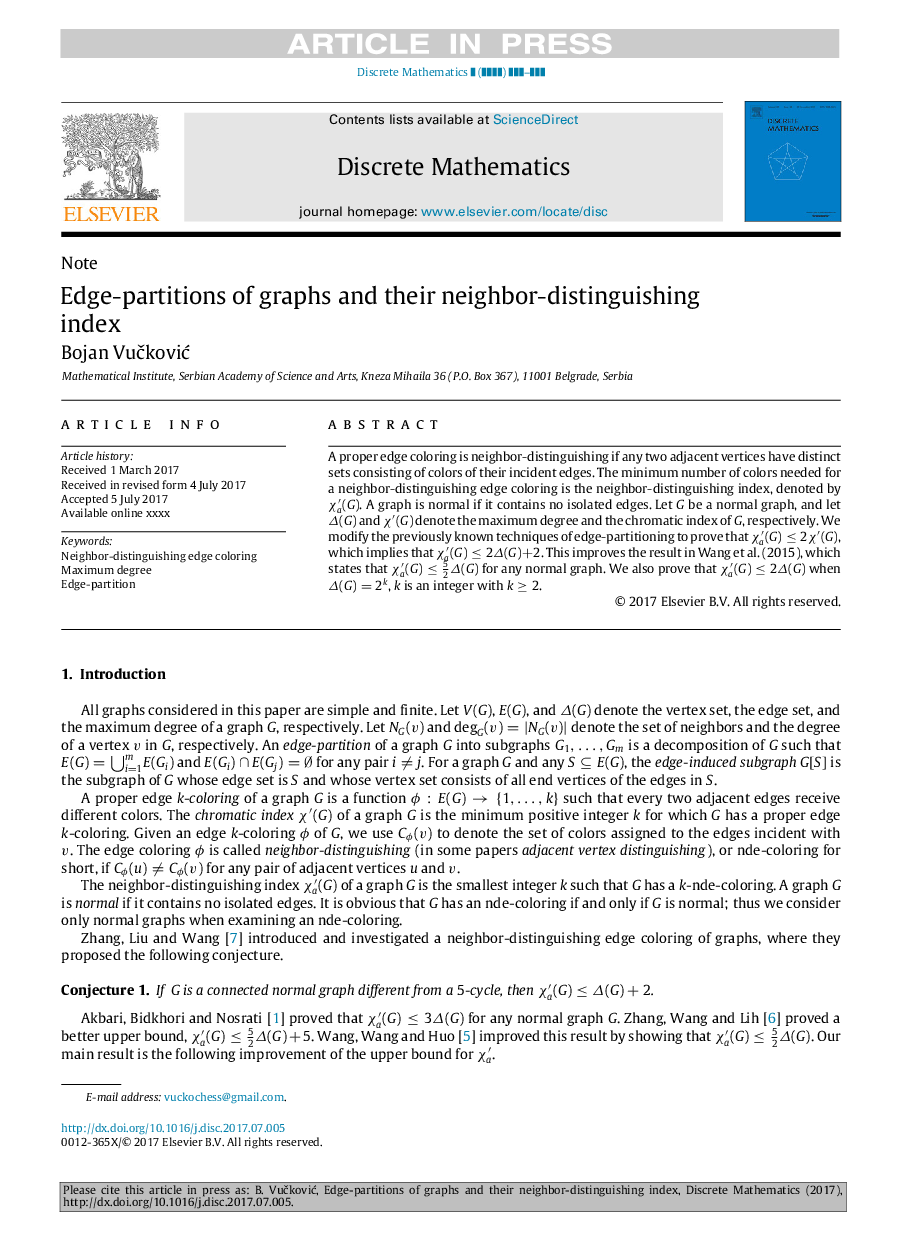| Article ID | Journal | Published Year | Pages | File Type |
|---|---|---|---|---|
| 8903227 | Discrete Mathematics | 2017 | 5 Pages |
Abstract
A proper edge coloring is neighbor-distinguishing if any two adjacent vertices have distinct sets consisting of colors of their incident edges. The minimum number of colors needed for a neighbor-distinguishing edge coloring is the neighbor-distinguishing index, denoted by Ïaâ²(G). A graph is normal if it contains no isolated edges. Let G be a normal graph, and let Î(G) and Ïâ²(G) denote the maximum degree and the chromatic index of G, respectively. We modify the previously known techniques of edge-partitioning to prove that Ïaâ²(G)â¤2Ïâ²(G), which implies that Ïaâ²(G)â¤2Î(G)+2. This improves the result in Wang et al. (2015), which states that Ïaâ²(G)â¤52Î(G) for any normal graph. We also prove that Ïaâ²(G)â¤2Î(G) when Î(G)=2k, k is an integer with kâ¥2.
Keywords
Related Topics
Physical Sciences and Engineering
Mathematics
Discrete Mathematics and Combinatorics
Authors
Bojan VuÄkoviÄ,
